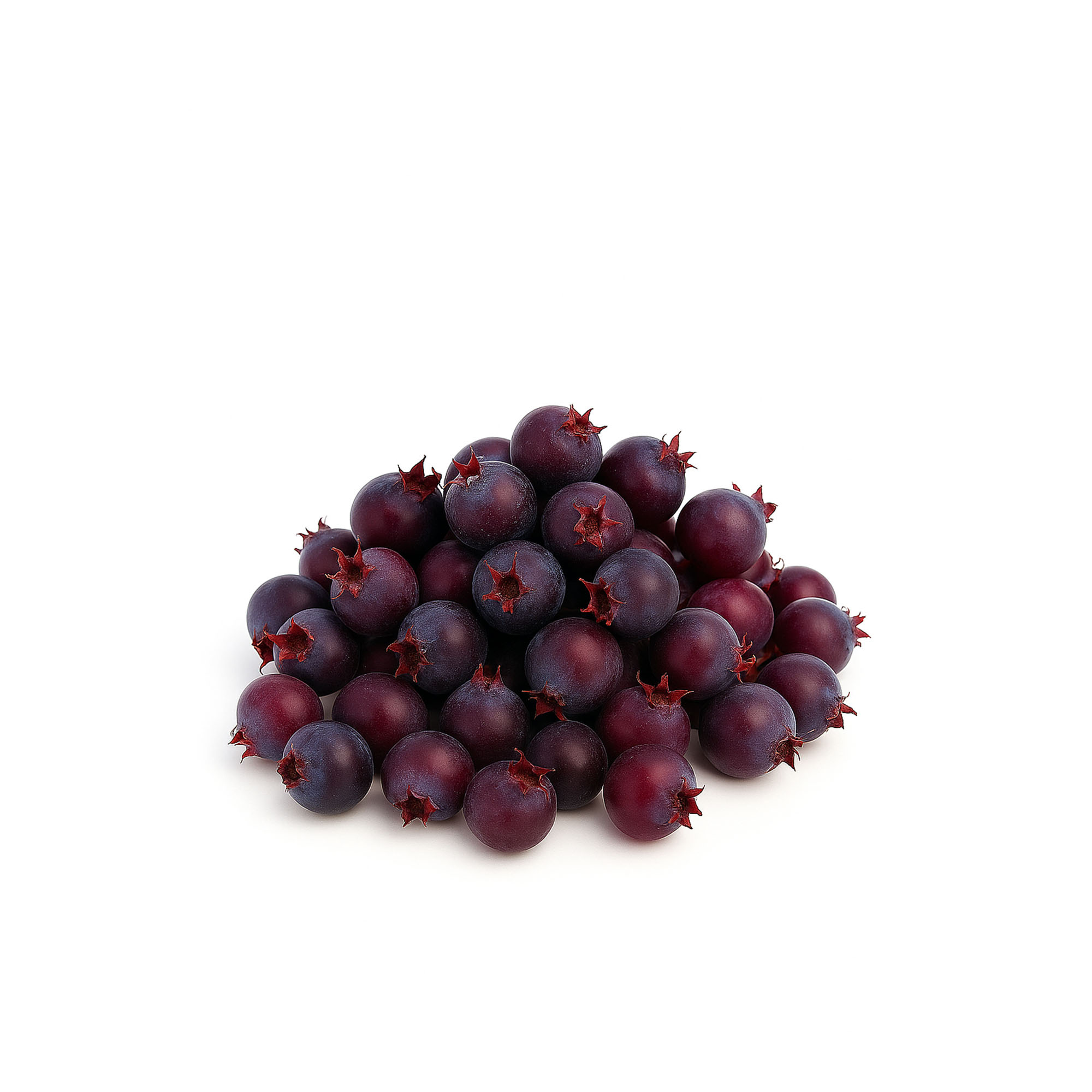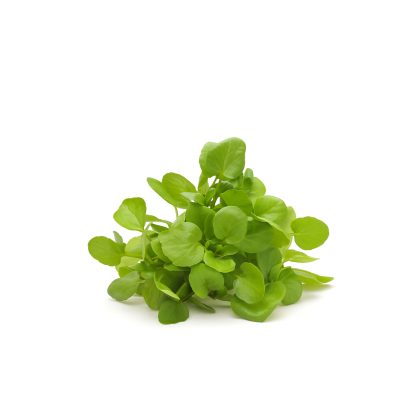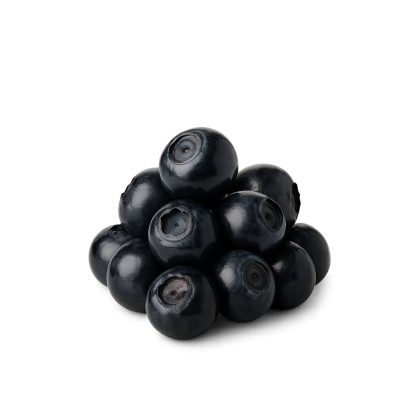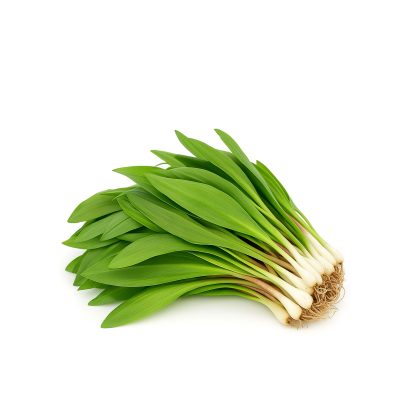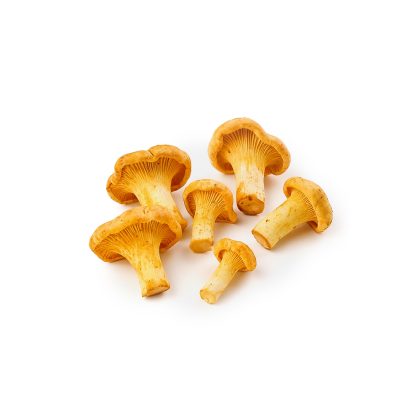Description & Taste
Juneberries, also known as serviceberries or saskatoons, are small, dark purple fruits with a rich, complex flavor that sets them apart from common berries. Though similar in appearance to blueberries, their taste leans deeper—offering notes of black cherry, wild plum, raisin, and a whisper of almond from their soft seeds. The skin is smooth and thin, while the flesh is tender yet firm, making them perfect for both fresh use and cooking. Each berry measures 1–1.5 cm in diameter and grows in tight clusters on multi-stemmed shrubs or small trees.
Seasons & Availability
Wild Juneberries are hand-foraged in early to mid-summer from open woodlands and mountain slopes in Washington State. Their brief season makes them a true seasonal delicacy.
Fun Facts
Belonging to the Amelanchier genus, Juneberries are native to North America and known by many names: saskatoons in Canada, shadbush along the East Coast, and serviceberries in parts of the Midwest. In Washington, they thrive in high-altitude, sun-exposed terrain where cooler nights intensify their sugar content. Unlike commercial blueberries, Juneberries are rarely cultivated at scale, making wild harvests a prized and limited opportunity.
Nutritional Value
Juneberries are nutritional powerhouses—naturally high in fiber, calcium, and manganese, with nearly double the iron of blueberries. Their rich purple hue signals a high concentration of anthocyanins, potent antioxidants associated with heart health and anti-inflammatory benefits. They’re also a good source of plant-based protein and lipids, thanks to their seed content.
Culinary Applications
Juneberries hold their shape beautifully when cooked and don’t release excess moisture like many berries. This makes them ideal for:
- Pies, muffins, cobblers, and crisps
- Jam and preserves with a naturally balanced sweetness
- Freezing or drying for long-term storage without losing texture
- Savory pairings like venison or pork—use in glazes, sauces, or stuffing with aromatics like sage or shallot
- Fermentation in shrubs, cordials, or berry-infused vinegar
Their wild edge and flavor complexity lend themselves to both rustic and refined dishes.
Ethnobotanical & Cultural Notes
For centuries, Indigenous peoples across North America used Juneberries not only as food, but as a key ingredient in pemmican, a traditional preserved food. Today, they’re celebrated in Canada—especially in Saskatchewan, where “saskatoon berries” are a regional hallmark. In the U.S., the term “Juneberry” remains most common, particularly in foraging and farmer’s market circles.
Origin & Harvest Region
These Juneberries are wild foraged in the inland foothills and forest edges of eastern Washington, where they ripen in the cool mountain air. Their high-altitude origin, low-intervention growth, and early-summer harvest give them a terroir that’s unmistakably Pacific Northwest.

